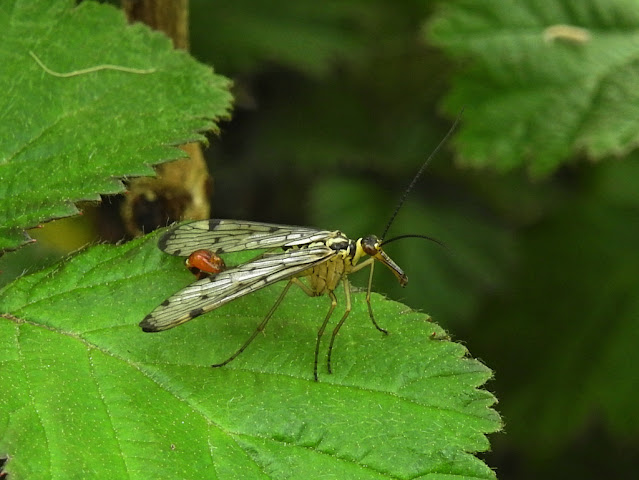It's not like I didn't try. From first light until 07:15 in the seawatching shelter, as the precipitation developed from 'spitting' to 'steady', Pete Forrest and I were blessed with 3 Gannets, 1 Oystercatcher and a flock of 7 Whimbrel. A seeming lull in the rain had me out again at 10:00. Single Reed and Cetti's Warblers, 2 Lesser Black-backed Gulls and the loopy harbour Wigeon were hardly bounteous fare. With a band of rain stretching from here roughly to Antarctica, I doubt many migrants fancied a day out. And in this weather, neither did I. So this blog post is borne entirely of stir-craziness. Which probably shows...
Yesterday afternoon was lovely, and West Bay was rigid with human. It was Pirates Day. Live music, sunshine, a beer tent... Weaving through the noisy crowds, en route to quieter spots inland, I felt like someone from another planet. At 10pm, the firework show. Three miles inland it was incredibly loud, and my nocmig kit bore witness. Hundreds of explosions - from staccato volleys to thunderous booms - peppered the sonogram. As one of the local birders mentioned on WhatsApp, our small Fulmar colony no doubt had a grim night. Just one trivial example of the myriad ways we demonstrate almost zero consideration for this planet's other tenants.
A little inland from the Bank Holiday weekend fun, I was poking around a lovely bit of habitat which I have belatedly decided to include in the West Bay + Eype Patchwork Challenge patch (amended map HERE) and my attention was wandering...
Recently I have once again taken to carrying a few screw-top pots in my camera bag. As last autumn, my intention is to collect any interesting moths I encounter while out birding. Anyway, this 'new' inland bit of my patch is leaping with tiny life, and the pots were soon filled. Here is my prize catch...

|
|
This microscopic moth is just 4mm long. |
To the naked eye, this moth is a tiny speck. Not many years ago there were so few references available that I would have stood no chance of identifying it, and yet look at me now. Newbie moth-botherer posting annotated image of a creature so small that eight of them, end-to-end, would barely stretch an inch. How times change.
Modern-day ID Process as follows...
From previous experience I was pretty sure it was a Phyllonorycter - or very close relative - so went straight to the relevant pages in 'Manley' (a photographic field guide). I couldn't find a good match, so tried running a photo through ObsIdentify (an AI identification app on my smartphone). That got me 'Phyllonorycter sp', but no further. Next, a visit to the UK Moths website, where I again went through the Phyllonorycter moths, one by one. This time I did see a match: P. viminiella. I double-checked 'Manley' (which shows a much fresher specimen) for flight time, food plant etc; looked at several online photos of the species, etc, etc, and was finally satisfied that I had a sound identification.
Mooching about in this morning's dreary weather, I couldn't help pondering a sad irony. Undoubtedly we have never been better able to put a name to the millions of creatures that share our planet, or better equipped to record and analyse their geographic and numerical status. So, as we impotently watch their populations shrink and wither, at least we will know what they were called, where they lived, and how many there once were...
Yep, weather like this does me absolutely no good at all.
I shall close this joyous epistle with a few pics of other things I've been able to name...

|
|
Common Carpet. And common it is, though rarely as pristine as
this one, our first of the year. |

|
|
First Ruby Tiger of the year. |

|
|
A small (7mm) Tortrix moth that I recall catching last year too. |

|
|
First for 2023. According to Living Record, the nine we had last year makes
our garden the best site in Bridport for this species! I'm not sure I
believe that. |

|
|
Scorpion Fly Panorpa communis - one of yesterday's distractions. |
Your moths are amazing Gav. In the grim north it is still February. This morning I had 3 Hebrew Characters, 1 Clouded Drab, a Parsnip and a Common Pug. Those arenella are in my top 5 commonest garden micros! Its a very common species in Northumberland.
ReplyDeleteSometimes it's like Dorset and Northumberland are two different countries, let alone counties! 😄
Delete